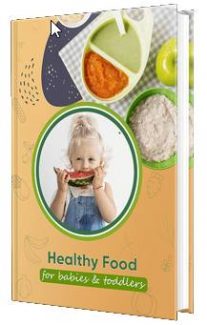
 License Type: Private Label Rights
License Type: Private Label Rights  File Type: ZIP
File Type: ZIP
 SKU: 65017
SKU: 65017  Shipping: Online Download
Shipping: Online Download
Sample Content Preview
WHEN WILL MY BABY BE READY FOR SOLID FOODS?
Most babies are ready for solid foods around six months of age. Around this time babies need more nutrients than they receive from breast milk or infant formula alone, especially iron. Signs that your baby is ready to start solids include:
Being able to sit up well with support
Being able to hold their head up
Showing an interest in food such as watching you eat and trying to reach for food when you are eating
Being hungrier and not settling well after a full feed.
TIPS
- A number of attempts on different occasions may be needed before a new food is eaten. Don’t give up on the first go, keep on trying and keep it fun!
- Continue breastfeeding (or feeding your baby infant formula) while introducing solid foods until your baby is 12 months old.
- It is common for babies to gag, with coughing or spluttering, while they are learning to eat. This is different to choking and is not a cause for concern. However, choking that prevents breathing is a medical emergency, so never leave your baby unattended while they are eating.
- See page 36 for food safety tips.
HOW DO I START?
Start with small amounts of iron-enriched infant cereal and/or cooked pureed meat, poultry, fish, plain tofu or legumes (e.g. lentils, chickpeas and red kidney beans). Then offer your baby a variety of foods from the five food groups that include a range of flavours, for example different types of pureed vegetables and fruit.
6 months
PUREE
MASHED
MINCED
CHOPPED
8 months
FINGER FOODS
12 months
FAMILY FOODS
TIPS
- Increase and vary food textures to help baby develop. Babies adapt quickly moving from pureed and finely mashed foods to lumpy foods.
- Introducing more textured foods reduces the risk of speech problems and fussy eating.
- License: Private Label Rights
- Category:Ebooks
- Tags:2022 Ebooks Private Label Rights







